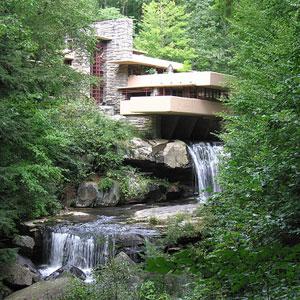Summer is upon us! It’s a good time to catch up on your reading or do some traveling (even if it’s only a virtual roadtrip). This month, EDSITEment offers new and refreshed features and lessons as well as links to useful NEH-funded websites.
Summer Reading
Some books are to be tasted, others to be swallowed, and some few to be chewed and digested: that is, some books are to be read only in parts, others to be read, but not curiously, and some few to be read wholly, and with diligence and attention.—Sir Francis Bacon, English author, courtier, and philosopher (1561–1626)
Let us secure not such books as people want, but books just above their wants, and they will reach up to take what is put out for them.—Maria Mitchell, first American woman to work as a professional astronomer (1818–1889)
Make this summer a classic! EDSITEment has composed a guide to our lessons and reviewed websites based on the College Board’s recommended reading lists to enhance your leisure reading. Not only for college-bound students, these EDSITEment resources will elucidate themes and provide background to classic texts for educators and life-long learners. From Achebe, Chinua, to Zora Neale Hurston, Malcolm X to Aesop—there’s something of interest to all in our summer lineup.
Summer Travel
Hit the Road to Santa Fe
Staycationing this year? No worries … EDSITEment’s got your ticket to the Land of Enchantment. Follow the Road to Santa Fe: A Virtual Excursion. From historic Santa Fe, we will stop at two Native American settlements, San Idelfonso and Taos Pueblo, and experience their rich art and cultural traditions—especially their world-famous pottery focusing on the artistry of María Montoya Martínez.
Next we will trace the route of El Camino Real, the ancient road used for three hundred years (1585–1885) to connect Mexico City with Santa Fe, the capital of New Spain. Follow El Camino Real de Tierra Adentro, the first road in America and the longest for nearly a century, via EDSITEment’s interactive map of key points on the journey. UNESCO’s World Heritage Committee inscribed the Camino Real de Tierra Adentro, otherwise known as the Silver Route, as one of its newest World Heritage cultural sites in August 2010.
Coming full circle, we conclude our trip where we started, in Santa Fe, and explore the Palace of the Governors. Continuously occupied since 1610, it is one of the oldest governing structures in the country.
To prepare for the trip, visit the NEH-funded Southwest Crossroads: Cultures and Histories of the American Southwest, which provides teachers with an excellent online matrix of primary source materials, such as original photos, maps, painting, poems, oral histories, and films that can assist you in bringing to life the stories of the diverse people who call this landscape home.
Extend your student’s understanding with our new creative writing activity by having them imagine themselves as one of the characters that experience life on the trail or as one of the residents living at a key point along it. Students then craft their research into a first-person account.

Head to Fallingwater
Fallingwater in its setting embodies a powerful ideal—that people today can learn to live in harmony with nature.—Edgar Kaufmann, Jr.
Each summer thousands of vacationers visit Fallingwater in the mountains of southwestern Pennsylvania. This house is architect Frank Lloyd Wright’s potent union of art and nature. Hovering over a thirty-foot waterfall with cantilevered decks extending it into the surrounding forest, it seems a part of its natural site. The Picturing America website’s gallery includes information and teaching activities in its Educators Resource Book (PDF).
The Western Pennsylvania Conservancy now owns and protects Fallingwater and its surroundings, but in the 1930s this forest was a campground for Pittsburgh department store owner Edgar Kaufmann’s family, friends, and employees. They enjoyed hiking the woods, dipping in the swimming hole, picnicking, fishing, and just listening to the rushing stream and waterfall. However, when the road near their aging cabin was paved and traffic increased, they wanted a more modern year-round retreat farther off the beaten path.
They approached architect Frank Lloyd Wright to design a modern home for them. As Wright walked the property in 1935 with Edgar Kaufmann, Sr., he noted the shape of the land and how boulders stacked on top of each other with some projecting over the stream. When Kaufmann showed Wright his favorite spot, the waterfall, Wright decided to cantilever the house over the falls. Although Kaufmann imagined a house with a view of the falls, Wright envisioned the Kaufmanns living with the falls. Wright explained, “I want you to live with the waterfall, not just to look at it, but for it to become an integral part of your lives.” The sound of falling water filled the house, as did humidity. Because the house is directly over running water, it had problems with mold. “The senior Mr. Kaufmann called Fallingwater “a seven-bucket building” for its leaks, and nicknamed it “Rising Mildew.” Despite these problems, it is one of America’s and Wright’s most-loved architectural treasures. The Fallingwater website describes how this home was conceived, created, and conserved. It includes many teaching materials and photographs.
NEH Resources
Love your state? Become an expert. Find accurate information, fascinating facts, and insights about your state with these NEH-funded state encyclopedias. This collection of free, authoritative sources of information about the history, politics, geography, and culture of Alabama, Arkansas, Connecticut, Georgia, Louisiana, Maryland, Nevada, Oregon, Virginia, and West Virginia as well as the territories of Puerto Rico and Guam is updated regularly to ensure that it is accurate and accessible. The editors are continually adding new entries, photographs, and maps so check back frequently to see what’s new. New states and territories will be added when they become available.
Teaching the Middle East? Or looking for more background on the volatile events of this spring in that part of the world? Wendy Ennes, Associate Head of Public Education and Project Director of Teaching the Middle East: A Resource for Educators, Oriental Institute of the University of Chicago, writes:
Teaching the Middle East is a Resource for Educators that was created by the Oriental Institute, Center for Middle Eastern Studies, and eCUIP, Digital Library Project with high school and college World History teachers in mind. In our work with local educators, high school teachers tell us how difficult it can be to make sense of historical and current events in the Middle East and link those events to required curriculum. The political unrest currently reverberating across Northern Africa and the Middle East is no exception. High school World History teacher Mike Shea of Kenwood Academy in Chicago observes, “Two typical curriculum problems in teaching World History are finding concrete ways to link different curriculum units together and finding excellent but concise readings on topical issues …”
Teaching the Middle East: A Resource for Educators was first publicly launched here on EDSITEment as a free resource in late 2010. We welcome your feedback. Please tell us if the resource is doing its job—helping teachers and students discover the great currents of continuity and change in Middle Eastern history. It is our hope that this resource will also help users understand that the rich cultural diversity of the Middle East contradicts the stereotypes that can sometimes cloud our perceptions of this region. Academically rigorous, thoughtful, and stimulating, Teaching the Middle East offers new ways of seeing and understanding by bridging cultural divides and illuminating how our shared human concerns cross oceans, time, and cultures.
Finally, check out two NEH-funded apps for summer travel: PhillyHistory (for iPhone and Android), “a prototype application that enables you to see Philadelphia like never before,” and Walking Cinema: Murder on Beacon Hill (for iPhone), described as “mixed-reality storytelling guided by a live map and location-based experiences.”



